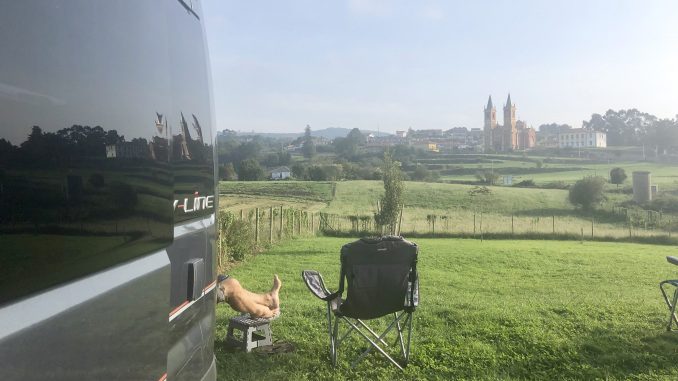
Contents
Where is the Cóbreces?
Cóbreces is a small village on the Northern coast of Spain in the region of Cantabria about 25 miles west of Santander. We were touring the area in our campervan in glorious September weather and wanted to stop somewhere near the beach. Our original plan was to stop in Suances but unfortunately the local council have made it illegal to park a campervan or motorhome in any of the carparks near Playa de la Concha and Playa del los Locos. This does not just relate to overnight parking but any parking at all.

We had a rethink and found an Area de autocaravana (AC) with great reviews listed on Campercontact in Cóbreces which looked to have a small village beach on google earth. To drive there we took the unnamed coastal road from Suances, hugging the coast line it had great views of the rugged cliffs and crashing sea below. You pass a couple of lovely beaches, Playa el Sable and Playa de Santa Justa are well worth stopping at if you have the time.
If you are travelling with a dog there seems to be a standard sign by every beach saying no dogs. If it is a large town beach this seems to be pretty much obeyed but on a small village beach, especially later on in the day and late on in the season, it seemed to be a flexible rule. We just followed whatever the locals did – Finn did go on a lot of beaches!
The Motorhome stopover
The stopover is called La Hazas and has 25 places on a hard surface with a grass area in front and is situated on the edge of the village. It is signposted off the CA-131 (43.388090 4.211860). Try and get a pitch on the right hand side as you drive in so you have the grass in front of your camper as this is a great area to pop your chairs out and have a glass of wine. I know in area de autocaravans camping behavior is usually not allowed but at this AC everyone was doing it and it certainly seemed to be tolerated The outlook is stunning with a view up to the parish church of St. Peter ad Vincula which was built between 1891 and 1894, which is huge and dominates the skyline. The facilities are spotlessly clean and well maintained. There is a small building housing a unisex loo and shower (a hot shower is €1 for 7 minutes) and a washing machine and dryer, which are €4 each. We used all the facilities and everything worked perfectly. The dryer was by far the best we have ever used on a campsite.
There is a lovely friendly lady who is at the hut twice a day, morning and evening to collect the fees. It is €9 a night with an additional €3 if you have electric. Included in the €9 is WiFi which worked pretty well even though we were right at the end of the parking and had a huge motorhome between us and the but. There were about 20 campers there each evening we stopped. The WiFi password is on the information sheet you are given when you pay.
The stopover even has its own website www.areaautocaravanslashazas.com
If you do not wish to stop the night and just want to use the service area to empty and refill then there is a €4 charge.
If you are planning on stopping at this AC and are a light sleeper you may want to take earplugs. There is some noise from the cattle bells, cockerels and church bells. This wasn’t a problem for us and certainly wouldn’t put us off stopping again but others may consider it too ’noisy’. Personally, I would welcome these sounds over traffic and music all-day long.
Overall we would give this AC a 5-star rating as it has good facilities, for a fair price in a lovely location.
Cóbreces Village
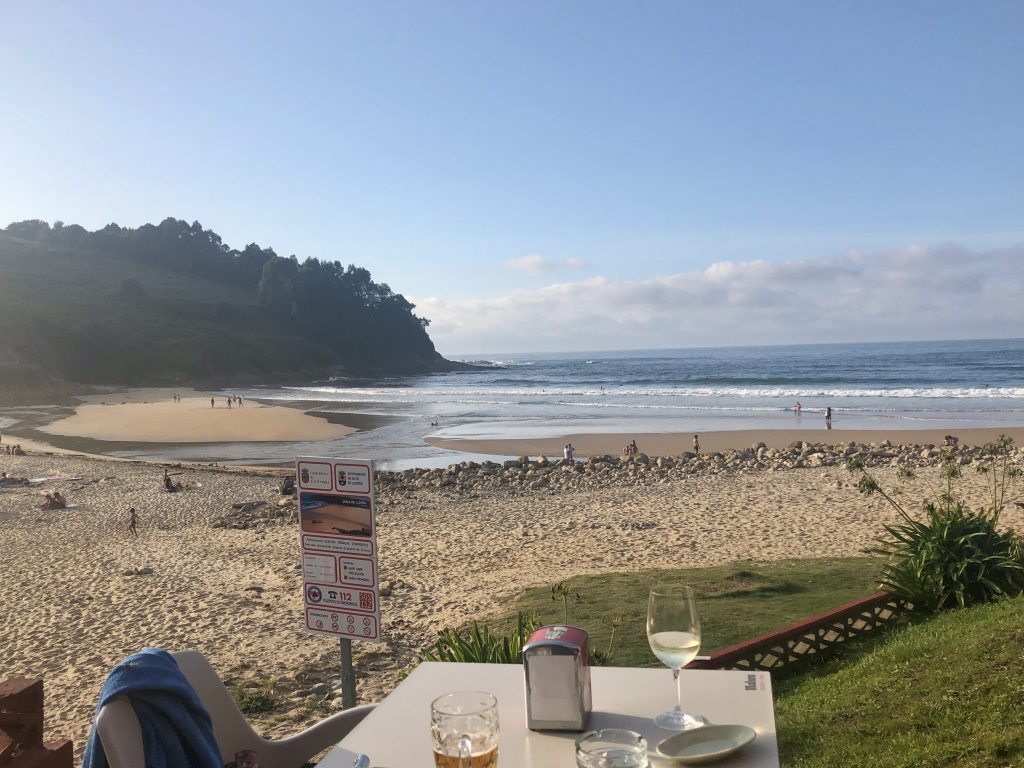
It is only a small village with a population of less than 1000 people.
Playa de Luaña is the 400m long village beach and is about a 10/15 min walk from the Area de Autocaravana. By the beach, there are a couple of restaurants and a surf school. If you want to visit the beach in your motorhome be warned there is very limited parking as the carpark has a height barrier and
When you pay at the AC one of the information sheets you are given has a map with all the restaurants and shops on it in the village.
We can highly recommend the panadería (bakery). Everything is made fresh on site and it was very traditional. There is not a shop front everything is sold from the ‘bakery floor’. We loved the croissants and pain au chocolate and the prices were very reasonable.
The Abadia de Santa Maria de Viaceliin in the village belongs to the Cistercian order. The monks manufacture a cream cheese which they sell themselves. It comes in 2 shapes, either cylindrical or log-shaped and is elastic and straw coloured. It is aged in a cellar under the altar of the monastery. https://www.monasterioviaceli.com
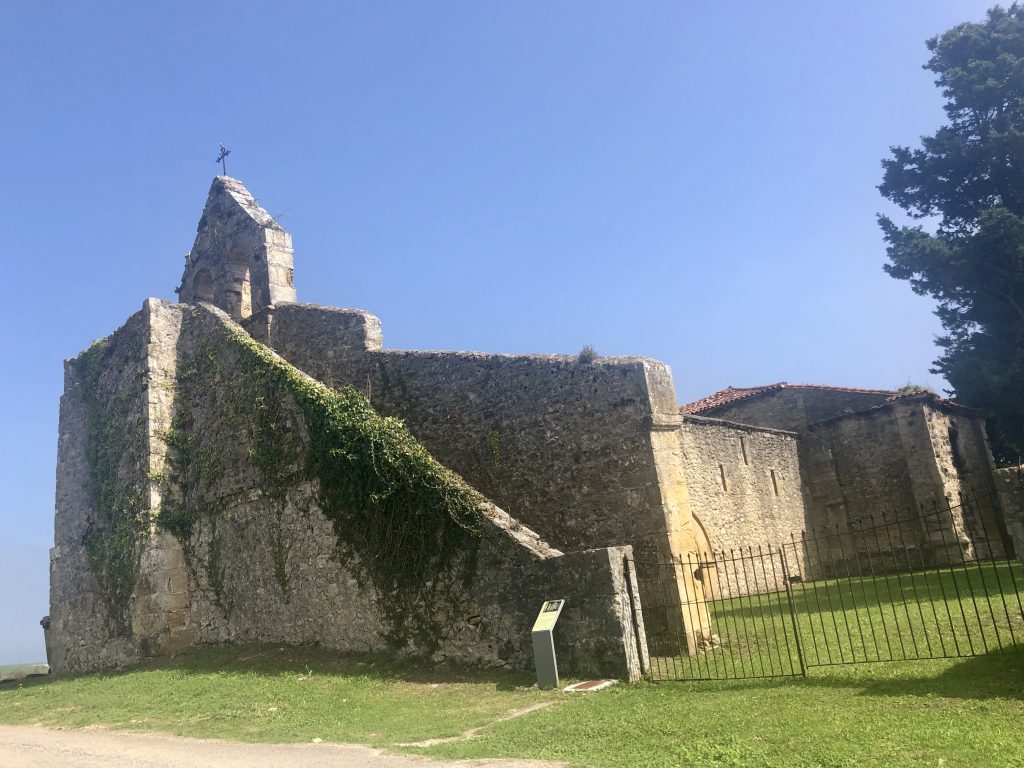
What is there to do in the surrounding area?
- Walking. When you pay as well as the information on the AC you will receive a sheet with local walks on it. We did the walk out to Cliff Bolao. There is a freshwater river flowing into the sea at this point with towering cliffs either side and the ruins of two old flour mills. With a bit of care it is possible to get down to the river so Finn was able to have a swim and cool off for the return walk home. This was only a short walk as the area was experiencing a bit of a heatwave so we didn’t want to do long walks but there were lots of options for walking if you fancy it.
- Santillana de la Mar village. A lovey medieval village which is the most visited village in the region and well worth a visit. Check out our blog post on visiting the village in a motorhome.
- Museo de Altamira The Altamira Caves are situated only 2km from Santillana del Mar. A hunter discovered the caves in 1879 and they are now a UNESCO cultural heritage site.
The caves are no longer open to the public but the museum is worth a visit. - Santillana del Mar Zoo has over 2000 animals and 300 species of trees and flowers set in 60,000sqm. There’s also a Stone Age park taking visitors back to the time when the local Altamira cave paintings were made.
- In Santillana del Mar there is also a Museo de la Tortura (the Museum of the Inquisition), containing their instruments of torture for those with a strong stomach.

To keep in the loop with our latest news and blog posts please subscribe to our newsletter.
-
Refreshments
-
Location
-
Facilities
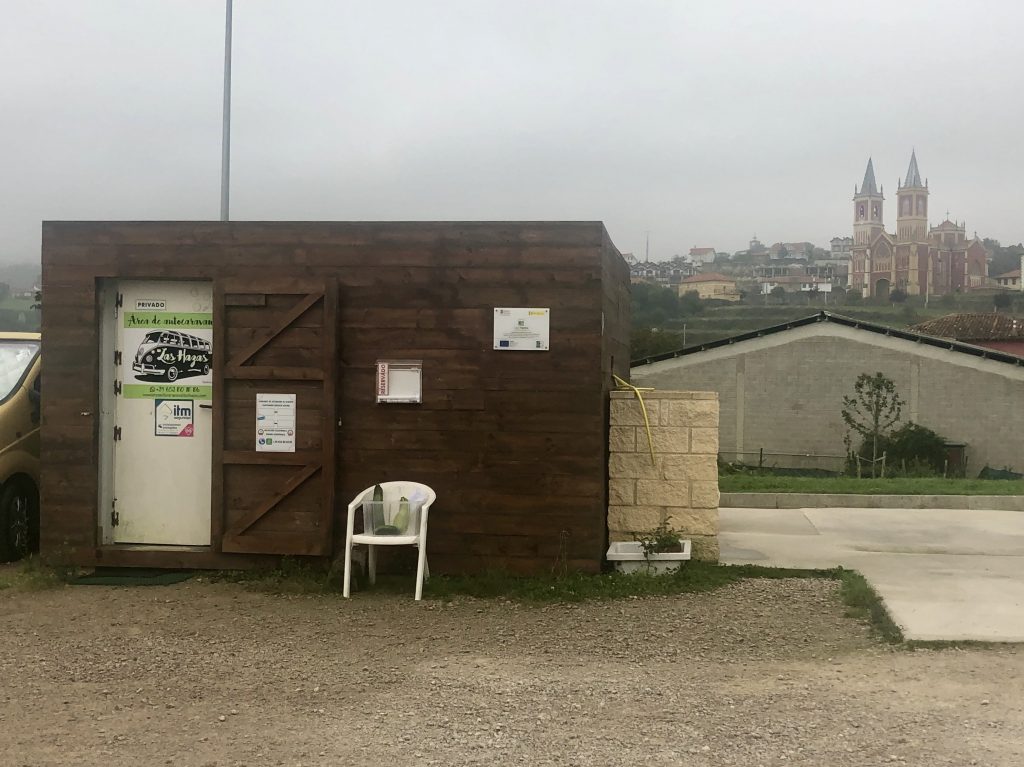
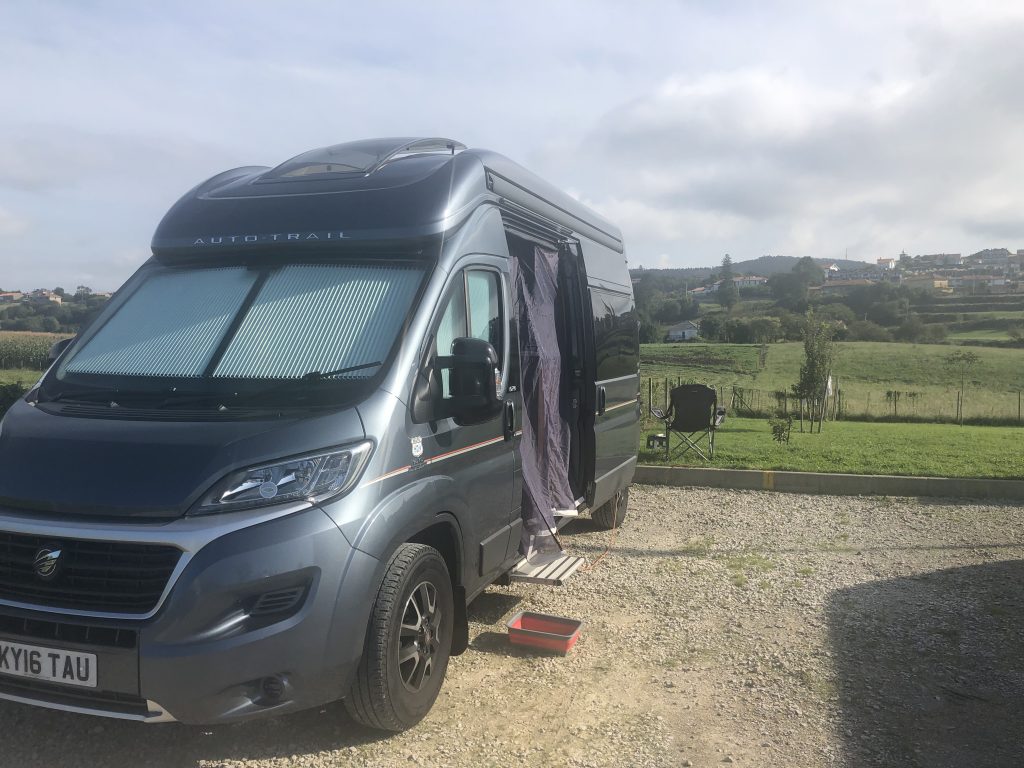

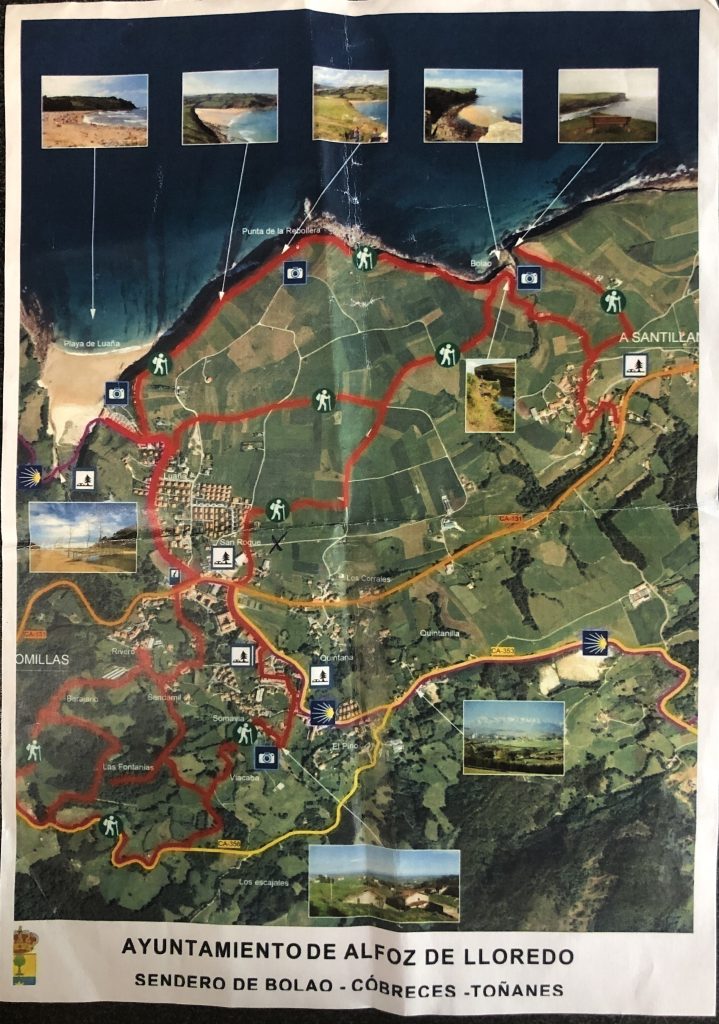
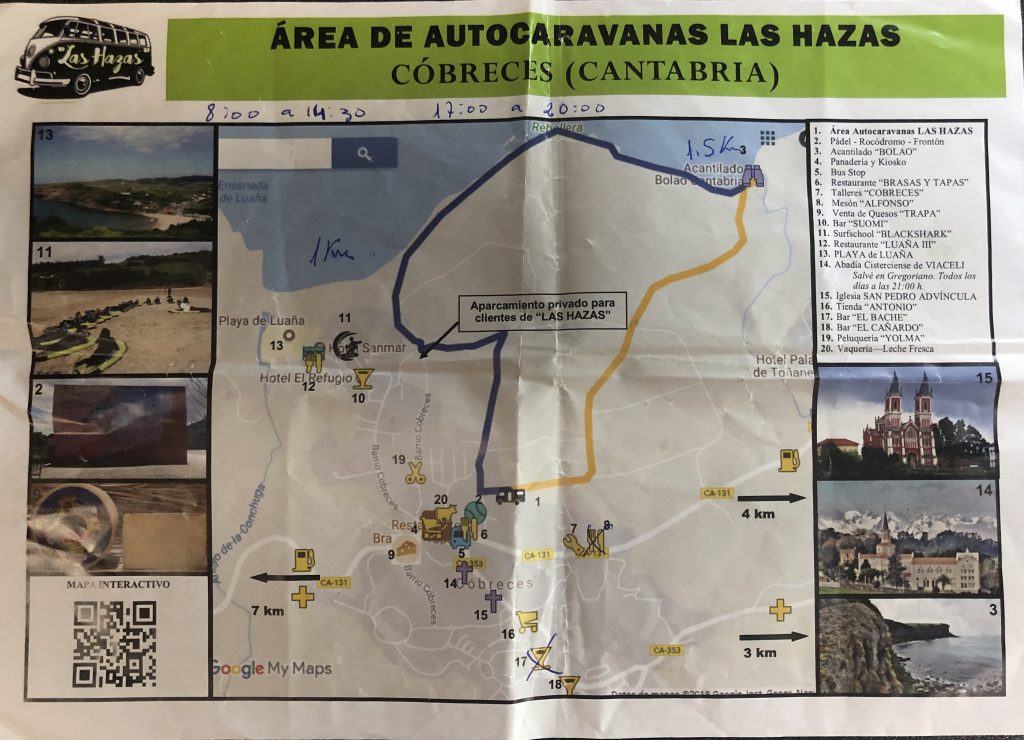




A really useful post thank you. It looks a lovely place to stay. I’ll share it on Twitter for anyone that has missed your review.
That is great, thank you. It was a lovely place to stay. We will definitely go back one day…